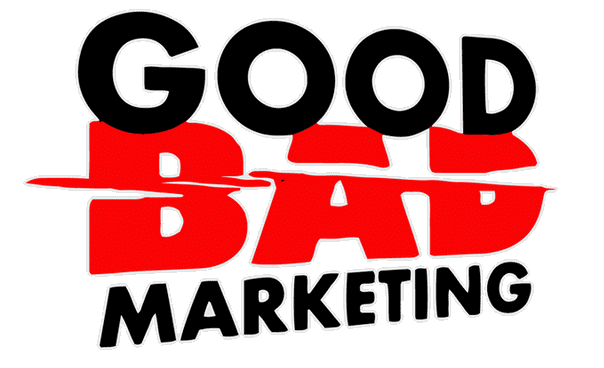Project management isn’t just something that exists within the walls of a corporate workplace. Project management is all around us. The device you’re reading this very article on is most likely the result of a successful project. Fortunately, that project was well-executed. What happens when a project fails?
When you get down to it, project management is something of an art form. There’s a lot to it, and it takes a knowledgeable project manager to keep things running smoothly. But even the most experienced project manager in the world will be defeated at some point.
There’s an array of project management methodologies to choose from, so it’s unsurprising that budding project managers can get a bit overwhelmed. There’s no way to be a perfect project manager, but there are many ways to be a good one. There are also many ways to be a not-so-good one, as illustrated in these famous (and infamous) examples of failed projects.
Unfortunately for the masterminds behind these failed projects, their idea did not come to fruition. Fortunately for us, we can learn from their mistakes.
Challenger Space Shuttle
The Challenger space shuttle had its moment of glory in 1986- and “moment” is meant to be taken literally here, because Challenger lasted 73 seconds before falling apart. Tragically, all seven astronauts onboard were killed.
Although a sudden sweep of cold weather was partly to blame for the disaster, it was determined that human error was also to blame- one phone call could have prevented this tragedy. It was also later revealed that engineers warned that the rubber O-rings could become brittle in cold weather, resulting in an explosion. Better communication between engineers and management could have saved seven lives and around 300 million dollars.
Other critiques were that NASA was simply being too ambitious. They made a classic project management mistake- they failed to work within their given constraints.
Airbus A380
From the beginning, the Airbus A380 was an exciting and ambitious project. Airbus was determined to launch the largest passenger plane the sky had ever seen. Parts were shipped from near and far- and it might have worked if any of those parts had fitted together correctly.
The downfall of this massive project was that the designers were not on the same page. In fact, you could say they weren’t even reading the same book. In addition to the complications forged by a team separated by borders and time zones, everyone was using different programs and systems. Project managers could have remedied this by improving communication between workers and providing more explicit instructions and expectations. These delays and mistakes led the project to cost over 18 billion euros.
McDonald’s Arch Deluxe Burger

In 1996, Mcdonald’s made the age-old project management blunder of failing to conduct market research to discover what their consumers were willing to purchase. Not after sinking about 150 million USD into advertising did they discover that their customers were not interested in this new version of their cheeseburger.
If Mcdonald’s wanted to sample a new menu option without conducting research, a more ideal method would be to release the Arch Deluxe burger on a much smaller scale. Assuming their customers would accept this new burger was a misjudgement on their part. A simple customer survey or a limited release could have prevented this great loss, which ended up totalling around 200 million dollars.
Ford Edsel
On the surface, Ford seemed to be doing the right thing- the opposite of what Mcdonald’s did with their Arch Deluxe burger. Conducting extensive market research, Ford determined everything that customers wanted in a car. The result was the Ford Edsel, an amalgamation of everything their customers wanted, all packed into the perfect car. One problem: cars aren’t designed and built overnight. By the time the Edsel was released, the market had moved on.
The failure of the Ford Edsel was so great that the name Edsel dropped out of popularity, and still has not regained its spot. The Edsel was such a well-known flop that when Richard Nixon was pelted with eggs as he drove through Peru in an Edsel, he claimed that people were attacking the car, not him.
Market research is always a good idea, but the key is to react in a timely manner. Project managers failed to consider the time it takes to design a car and prepare it for the market, especially a car that contains all the features your customers seek.
New Coke

If human beings are notoriously and unanimously loyal to one thing, it may be the original recipe of Coca-Cola. Coca-Cola did the right thing in 1985 by conducting market research and finding that its customers were open to a new product. At first, it seemed like it would be a success- sales went up soon after the discontinuation of old Coke as everyone hurried to try this new recipe. And then the horror settled in as everyone realised what they had done. This new Coke was to replace the beloved and familiar original.
The reformulated recipe was unofficially dubbed New Coke, and it was not welcomed with open arms. New Coke fizzed out (pun not intended) of popularity as quickly as it had risen.
Garden Bridge
One unique aspect of the Garden Bridge project was that it was not run by any kind of project manager but by the former mayor of London Boris Johnson. Though one could argue that the title is a project management job in itself- London is a pretty big project to manage.
The bridge was undeniably ambitious- a beautiful, flower-adorned bridge that would act as the “tiara of the Thames”. The project swallowed 21 million pounds even before the land had been secured, and by the time the project was officially ditched, 53 million pounds had been spent, 43 million of that being taxpayers’ money. In addition to this massive waste, the 160 thousand pound website and the 400 thousand pound gala dinner for the future bridge did not impress the British public.
The Garden Bridge is the perfect cautionary tale because the project manager/s made most of the mistakes that a project management team can make. Poor planning and failure to listen to those funding the project (in this case, this happened to be the British public) led to the downfall of this project before it had really started.





